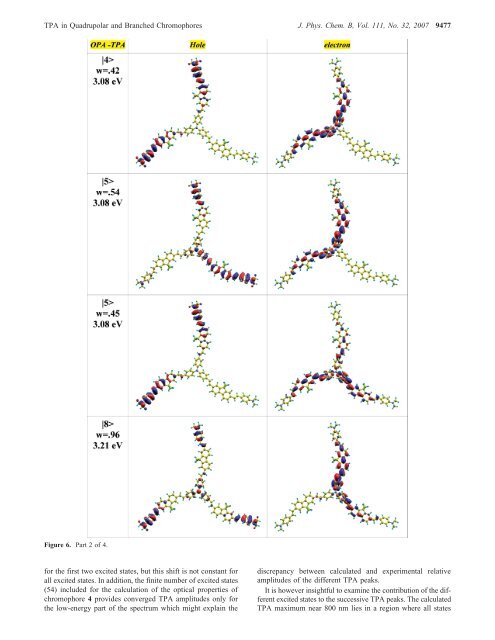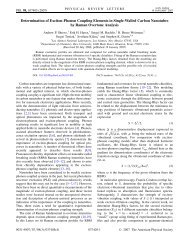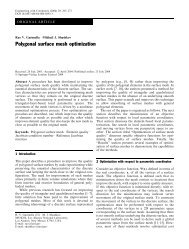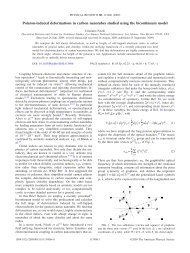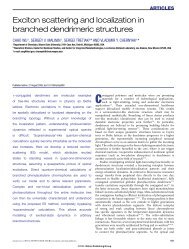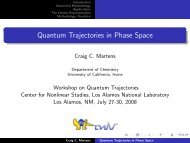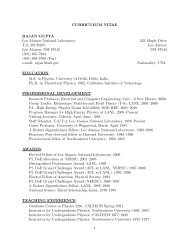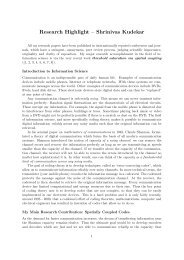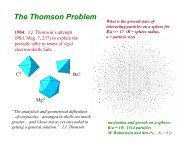Two-Photon Transitions in Quadrupolar and Branched - American ...
Two-Photon Transitions in Quadrupolar and Branched - American ...
Two-Photon Transitions in Quadrupolar and Branched - American ...
You also want an ePaper? Increase the reach of your titles
YUMPU automatically turns print PDFs into web optimized ePapers that Google loves.
TPA <strong>in</strong> <strong>Quadrupolar</strong> <strong>and</strong> <strong>Branched</strong> Chromophores J. Phys. Chem. B, Vol. 111, No. 32, 2007 9477<br />
Figure 6. Part2of4.<br />
for the first two excited states, but this shift is not constant for<br />
all excited states. In addition, the f<strong>in</strong>ite number of excited states<br />
(54) <strong>in</strong>cluded for the calculation of the optical properties of<br />
chromophore 4 provides converged TPA amplitudes only for<br />
the low-energy part of the spectrum which might expla<strong>in</strong> the<br />
discrepancy between calculated <strong>and</strong> experimental relative<br />
amplitudes of the different TPA peaks.<br />
It is however <strong>in</strong>sightful to exam<strong>in</strong>e the contribution of the different<br />
excited states to the successive TPA peaks. The calculated<br />
TPA maximum near 800 nm lies <strong>in</strong> a region where all states


